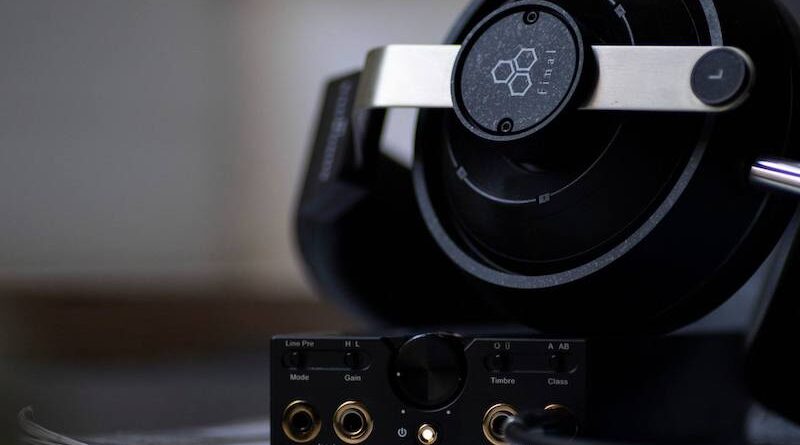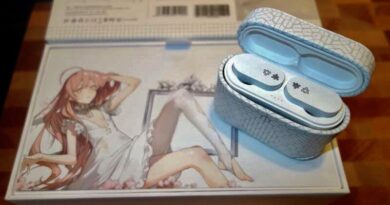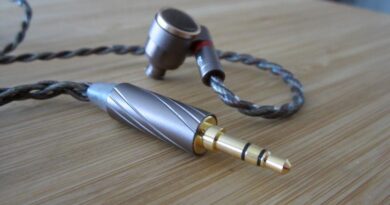final Sonorous-II And Sonorous-III Review
I’ve been adopting and enjoying final Sonorus-II and Sonorous-III as my preferred closedback mid-tier (€300-ish) headphones for a while now, but other stuff kept me from dedicating enough time to report my views on a article.
Now that these babies have been stuck on our Wall of Excellence though… well, it’s time to act.
In this Article
At-a-glance Card
| PROs | CONs |
| Beyond spectacular 3D soundstage (for closedback HP) and imaging. | Not recommended for unseated listening. |
| Two alternative, equally enjoyable timbres and tonalities. | Neither good for “bass-heads” and/or distorted electronics lovers, etc. |
| Sonorous-III great on natural, relaxed, microdynamic delivery. | Not a lot of third party accessories available for the mod inclined |
| Sonorous-II special for clear, acoustic, vivid notes. | Some sound leak, not recommended in a library or such |
| Further tuning adjustement possible via pad rolling. | |
| Good comfort. | |
| Very easy to drive. | |
| Superb construction and general quality at a not huge price. Great value. |
Full Device Card
Test setup
Sources: Apogee Groove + Burson FUN + IEMatch / Apogee Groove / Sony NW-A55 mrWalkman / Questyle QP1R – Type-D pads on Sonorous-II, Type-E pads on Sonorous-III – Stock OFC cable – lossless 16-24/44.1-192 FLAC tracks.
Signature analysis
| Tonality | Both models offer and evidently acoustic, organic timbre. Sonorous-II more inclined to the clean&lean side, with edgier tones on all sections of the spectrum while Sonorous-III keener to softer transients, offering a more bodied while at the same time less aggressive sound. Both may be defined “organic”, just two different flavours. Sonorous-II tonality is bright-neutral, Sonorous-III play on more balanced tones, warmer than their siblings but only slightly warm in absolute terms, and with a definite centric accent. |
| Sub-Bass | Sub bass is fully extended down low on both models. Rumble is properly delivered, keeping its foundation role. |
| Mid Bass | Sonorous-II midbass is snappy on attack and fast on decays, tonically fit like an athlete. Modest in elevation, it never veils anywhere. Just a whiff more of decay would furtherly increase texturing. Sonorous-III are evidently more generous on mid-bass which comes out in a sense “gentler”, more textured and articulated, but also less incisive and “punchy”. Sonorous-III mid-bass is more athmospheric, and while both models do offer the same soundstage size on critical listening, the gut-feeling is that Sonorous-III‘s ambience is more extended due to such softer midbass tones. |
| Mids | Mids are possibly where the two models differ the most. Sonorous-II keep mids I would say in line with the midbass, and gives them a clear, full, rounded, enucleated, defined almost edgy character, all the way from low mids to high mids. Sonorous-III bring them more to the front of the scene, while at the same time removing some of their note solidity, swapping it for more slightly but evidently more relaxed transients resulting in a softer, warmer tone and a less technical if you wish but possibly more organic timbre. As mentioned above Sonorous-III push midbass higher than Sonorous-II but the same happens on lowmids which is why the latter never sound recessed compared to the midbass, the other way around sometimes which is personally, if one, the sole single part I’m not deeply fond of regarding both of these phones. |
| Male Vocals | Male voices on Sonorous-II are clear, neutral, detailed and articulated. Sonorous-III makes them evidently warmer a more accented; compared to Sonorous-II you lose a tad of contour precision, but get a higher organicity sensation in return. |
| Female Vocals | Sonorous-II delivers clear, loud, sparkly female voices. Sonorous-III makes them a good 10% softer and less “vivid”, more polished, slightly warmer and somewhat more nuanced. |
| Highs | Taken per-se, trebles are equally elevated and extended on both Sonorous-II and Sonorous-III. The difference lies in note weight and air. Sonorous-II offer edgier notes, which are nevertheless also very well bodied at all times, granting absense of shrills or zings, or excessive thinness on microdetails. Sonorous-III deliver less edgy, more polished notes on trebles like it does all over the presentation. Hence, treble notes come accross as thinner on Sonorous-III, thereby on one hand more structurally inclined to render cymbals micro-sparkles, and on the other hand less authoritative, more blended in the overall more relaxing Sonorous-III presentation compared to the more energetic experience delivered by Sonorous-II |
Technicalities
| Soundstage | Very exteneded in width, which becomes extremely extended if we consider we are talking about a closedback, and incredibly extended in terms of height and depth. Sonorous-II and Sonorous-III deliver a quite holographic stage scene. According to final this is one of the direct results of their BAM technology (see below), and it’s probably the best, or second best aspect of these headphones. |
| Imaging | Sonorous-II and Sonorous-III imaging is nothing short of spectacular, result of driver precision and presentation clarity |
| Details | Detail retrieval is better from highmids and trebles and more limited from the bass on both models. That being said, as mentioned above Sonorous-II deliver edgier, snappier and more solid (bodied) notes and come therefore accross cleaner than Sonorous-III when it comes to macro-details, and less subtle, less micro-dynamic than Sonorous-III when it comes to the tinyer details. |
| Instrument separation | Layering is very good on both models, but Sonorous-II in this case comes out quite evidently better in the direct comparison. Sonorous-III‘s excersice of mids-centricity results in occasional layering deficiency on some tracks, in conjunction with particularly fast and busy passages. |
| Driveability | Both Sonorous-II and Sonorous-III share the exact same electrical requirements resulting in extremely easy driveability – a mere phone is enough powerwise. Needless to say, considering the drivers’ sophystication pairing a seriously good DAC upstream is strongly recommended. Also, depending on personal taste pairing Sonorous-II with a warm amp may offer an interesting presentation variation to explore. For similar reason, pairing Sonorous-III with a highly resolving source will too. |
Physicals
| Build | The two models are identical. Housings are made of sturdy ABS, with some 30% glass mixed-in. Physical resilience apart, the material choice is according to final crucial to keeping resonances under control. Pads are moderately soft, and their toroidal structure subtends a sheet of filter material. The hedband is made of steel, well padded and covered with the same faux leather as the pads. Housings are mounted onto the headband terminals with a sliding & 3d-swiveling mechanism which is at the same time apparently reliable, smooth to operate and very silent during normal head movements. |
| Fit | Sonorous-II and Sonorous-III pads properly embrace my outer ear (my pinnas are not small but not huge either, ymmv of course). Final makes a series of alternative earpads available which contribute to modify the tuning quite a bit, read below for a separate analysis. For the record my preference on Sonorous-II is Type-D, on Sonorous-III is Type-E, and as indicated above these are the pads I used for this review (and I use daily for my listenings) |
| Comfort | 410g are definitely on the border of comfort at least for my tastes, and anyhow I would never recommend wearing Sonorous-II or Sonorous-III while running or such. That said, I do find them more than bearable for even long-ish sessions even when I’m not relaxing on the armchair but just sitting at my desk. Within the boundaries of what is reasonable to expect by closebacks, they are also not nasty at all in terms of heating. |
| Isolation | Isolation is good but not “perfect”, some sound does leak both ways, and especially in the outer way. In practical terms, don’t expect your partner not to complain if you listen in bed, or others not to kick you out of a serious library… |
| Cable | Sonorous-II and Sonorous-III both come bundled with the same OFC cable. Build quality is apparently top notch, it’s nigh-impossibly to make it tangle, produces zero microphonics and the sheath has a wonderfully smooth, satin finish. The 3.5mm connectors plugging into the drivers feature a brilliant “twist&lock” mechanism. It’s apparently not easy to find third party alternative / upgrade cables on the market, and – be warned – final-brand ones are pretty expensive. |
Specifications (declared)
| Housing | The housing employs hard resin comprised of hard polycarbonate strengthened with 30% glass added to it. Resonance is suppressed and clear sound quality is achieved. |
| Driver(s) | Single 50mm titanium dynamic driver. Titanium plays a role in enhancing resolution and the generation of high frequency harmonic overtones. |
| Connector | 3.5mm female connectors, with 90° twist locking mechanism |
| Cable | Detachable OFC cable with 3.5 mm, 2-Pole plugs with locking function on the driver side and 3.5 mm, 3-Pole plug on the host side (1.5m) |
| Sensitivity | 105 dB |
| Impedance | 16 Ω |
| Frequency Range | n/a |
| Weight | 410g |
| MSRP at this post time | Sonorous-II ¥ 38.500 (€ 300) Sonorous-III ¥ 44.620 (€ 345) |
A glance at the technology
Quite a few by now know final (yes, they write it lowercase) as a group of incredibly proficient audio engineers, and their products, may them encounter the complete appreciation of the single individual or not, based on personal taste, are anyhow always granted to be the fruit of non-trivial investigations, studies and technological achievements. Sonorous headphones make of course no exception.
Ear pads
Ear pads – their internal structure, size, thickness, and external fabric – do change headphones sound even more than what eartips do to IEMs.
First and foremost, the distance between the actual sound transducers and the ear modulate low frequency sound pressure, which obviously significantly influences the presentation. Based on this fact, final Sonorous earpads are filled with sponges of different thickness and consistency. Their external material is synthetic leather featuring equal horizontal and vertical flexibility.
Another important aspect when it comes to closed-back earphones is avoiding sound appearing “muffled” due to lack of backside venting. Final accomodates for this by carving small apertures on the inside and the outside of the pads “donuts”, achieving superb results in terms of sound clarity.
Lastly, final designed a quite ingenious system to facilitate pad swapping. By direct experience it does work. You may want to take a look at this video to get an idea.
BAM
That stands for “Balancing Air Movement”. It’s the marketing name for final’s project focused on obtaining results similar to open-back heaphones even on closed-back ones, especially in terms of clarity, controlled bass delivery and of course soundstage and imaging.
At final, we decided to focus on developing technology for the reproduction of bass tones and three-dimensional space with the full-range reproduction of a theoretically unproblematic single driver unit, rather than taking things in a multiway direction. We went back to the beginning and reviewed the performance of the balanced armature driver, focusing our attention on something we had previously overlooked : airflow inside the housing. We developed BAM (Balancing Air Movement), a mechanism that optimizes airflow inside the housing through the creation of an aperture in the driver unit, which is usually sealed. While achieving bass tones and deep, three-dimensional spatial representation, which proved difficult with single driver full-range reproduction, we achieved a BA type that at the same time made for natural listening the user doesn’t tire of.
https://snext-final.com/en/products/detail/SONOROUSII.html
And boy, that works! Of course I’m not technically competent enough to say wether the trick is that or “just” that, but it’s a fact that Sonorous earphones do deliver an incredibly clear and vast soundstage, and perfectly controlled bass, actually sensibly better than any other closedback headphone I happened to audition equal or below their cost. On the other hand, reading final’s description we get a hint as to why Sonorous HPs are “less isolating” than other models in their same technological category.
Let’s pad-roll a bit… !
Sonorous II and III are good as-is, i.e. with their stock pads. Period. You can skip this chapter, especially if you are on a tight budget.
That said, given my appreciation for the base configuration I wanted to go all the way through on their available options – at least the official ones, those offered by the manufacturer themselves.
Final makes a number of variations available for their Sonorous headphones line, which are all mechanically compatible with every model in the lineup as the housings chassis are identical accross the board. Each model is named with a letter (Type-B, Type-C, etc). Sonorous-II and Sonorous-III come equipped with 2 different earpad variations already, then I ordered 2 more different ones, and I started rolling…
| Model | Sonorous-II notes | Sonorous-III notes |
|---|---|---|
| Type B (Sonorous-IV stock) surface : synthetic leather sponge : ralatively thin and soft filter : single layer | Bass is faster than stock (E) and even faster then (C). Mids are similar but highmids get some adrenaline. Trebles stay vivid and sparkly. Overall sensibly brighter compared to stock, might be excessive for some users, and definitely for some genres. | Mids are more recessed than stock (D) and furtherly back compared to (C), while still very well defined and detailed. Bass is even faster. Highmids become the star of the show. |
| Type C (Sonorous-VIII/X stock) surface : synthetic leather sponge : W ring combining two different sponge types filter : 3 layer | More bodied bass and mids compared to stock (E). More evidently polished / tamed trebles which come accross less sparkly. Definitely more balanced. | Darker than stock (C). Mids are recalled from full forward position. Some air is lacking. |
| Type D (Sonorous-III stock) surface : synthetic leather sponge : thick, strong sponge filter : 3 layer | Bass is very similar to stock (E). Mids add some body. Trebles get a bit polished. Overall more a “balanced bright” rather than “netural bright” effect. Still very good for jazz and probably overall ever more loveable than stock pads. *my personal preference* | Obviously midcenteric. Fast-ish bass. Good trebles. |
| Type E (Sonorous-II stock) surface : synthetic leather sponge : thick, strong sponge filter : single layer | Neutral-bright. Fast detailed bass. Good mids, not a specialist for vocals. Very nice detailed and quite airy trebles. Love this. | Faster bass compared to stock (D), mids pushed a bit back and made faster and more precise, sparklier trebles. *my personal preference* |
So the aftermath is… I could have saved the money for Type C and B, and just swap stock pads between Sonorous-II and Sonorous-III to reach my preferred configuration on both. But how could I have known it without trying? 😉
Conclusions
Sonorous-II and Sonorous-III are arguably the best closeback headphones on the market in their price class, and in my experience it takes tapping at Shure SRH-1540 to have something significantly competitive to talk about.
While they feature two quite different timbres, tonalities and presentations, neither is a real all-rounder musically wise. I’d recommend Sonorous-II blind-eyed for cool acoustic jazz, and any other clear-timbre musical genres, and Sonorus-III to whomever looks for a warm-neutral, midcentric, incredibly dynamic driver for prog rock, song writers, folk or such.
Finally, they are not “inexpensive” in absolute terms – so they might well not be one’s first take at overear headphones – but rest assured that they are not by any means “cheap”, indeed they are actually worth each single penny in their price for the quality, the comfort and the musical proficiency they deliver to their owner.
Disclaimer
Both samples I’m talking about in this article are my own property, they did not come from the manufacturer or a distributor on review/loan basis.
Our generic standard disclaimer.









